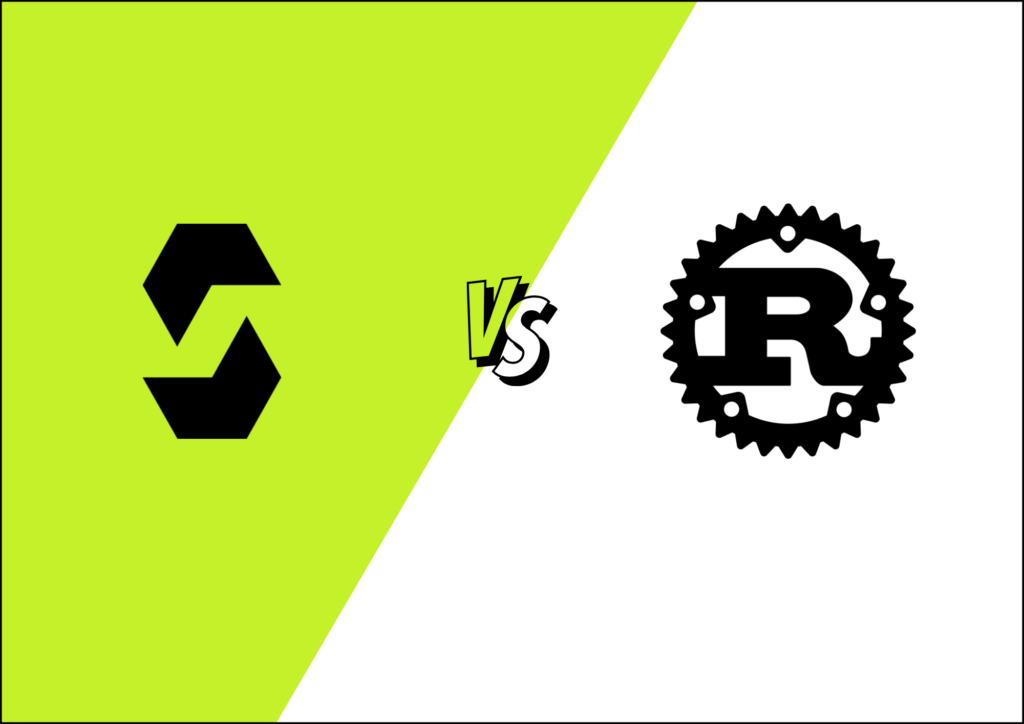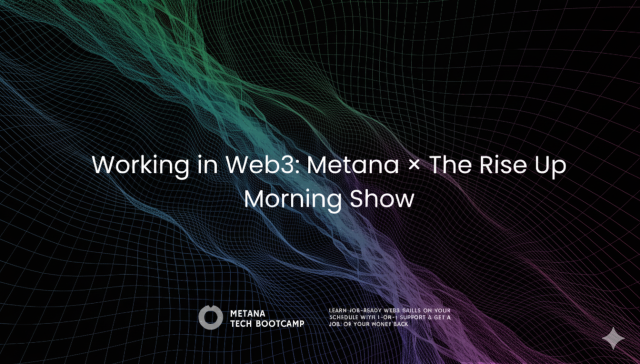TL;DR
- Solidity: Easy-to-learn, object-oriented language designed specifically for creating smart contracts on the Ethereum blockchain.
- Rust: Powerful, multi-paradigm language focused on memory safety and high performance, suitable for complex blockchain infrastructure and system-level applications.
- Use Cases: Solidity excels in DeFi, NFTs, and DAOs within the Ethereum ecosystem, while Rust is favored for blockchain protocols, cryptographic libraries, and cross-chain solutions.
- Pros & Cons: Solidity is easy to use with a large community but has had security vulnerabilities and is limited to EVM. Rust offers memory safety and performance but has a steep learning curve.
- The Future: Solidity will likely remain dominant for Ethereum smart contracts, while Rust gains traction for performance-critical blockchain projects.
Blockchain technology has revolutionized the digital world, and at the forefront of this revolution are two key programming languages: Solidity and Rust. The ongoing debate and comparison of Solidity vs Rust highlight their distinct advantages for blockchain developers. Solidity, tailored for Ethereum’s smart contracts, offers specific functionalities for blockchain applications. In contrast, Rust is renowned for its efficiency in system-level applications. This article delves into the Solidity vs Rust debate, exploring their functionalities, and their unique roles in blockchain development.
What is Solidity?
Solidity, a high-level, object-oriented programming language, is engineered primarily for developing smart contracts on the Ethereum blockchain. Its user-friendly design makes it an accessible choice for both beginners and experienced programmers. Solidity is a cornerstone of the Ethereum ecosystem, laying the groundwork for a wide range of decentralized applications.
Notable features of Solidity include:
- Object-Oriented Approach: Solidity utilizes classes and objects, making it familiar for developers with experience in other object-oriented languages.
- Smart Contract Functionality: Specifically designed for creating and managing smart contracts on the Ethereum blockchain.
- Event Logging: Facilitates tracking changes and interactions within smart contracts, essential for debugging and monitoring applications.
- Inheritance and Libraries: Supports inheritance in smart contracts, allowing for hierarchical organization and reusability of code, alongside powerful library support.
- Compatibility with Ethereum Virtual Machine (EVM): Solidity is fully compatible with the EVM, ensuring seamless deployment and execution of smart contracts on Ethereum.
- Rich Development Tools and Frameworks: Includes comprehensive tools like Truffle and Remix, which streamline the development, testing, and deployment of smart contracts.
- Built-in Functionality for Security: Offers features like modifiers and error handling to enhance the security and robustness of smart contracts.
- Flexibility and Adaptability: Capable of handling a wide array of use cases in the decentralized space, from simple token creation to complex decentralized autonomous organizations (DAOs).
Solidity’s combination of accessibility and robust features makes it a leading language for Ethereum blockchain development, playing a crucial role in the growth and diversification of decentralized applications.
What is Rust?
Rust, recognized for its systems programming capabilities, emphasizes memory safety and performance. This versatile language supports multiple programming paradigms, making it highly suitable for developing high-performance and secure applications. Despite its steeper learning curve, Rust’s robust features are increasingly attracting attention in the blockchain community.
Notable features of Rust include:
- Memory Safety Without Garbage Collection: Rust’s unique ownership model, featuring borrowing and lifetimes, significantly reduces memory-related errors without relying on a garbage collector.
- Zero-Cost Abstractions: Offers the ability to write high-level abstractions that compile to low-level code without performance overhead, ensuring efficient runtime.
- Concurrency Without Data Races: Advanced concurrency capabilities that prevent data races, a common issue in multi-threaded applications.
- Efficient C Bindings: Rust can interoperate with C language libraries and tools seamlessly, increasing its utility in existing systems.
- Pattern Matching and Type Inference: Facilitates powerful pattern matching for control flow and automatic determination of variable types, enhancing code readability and maintainability.
- Immutability by Default: Encourages a coding style where data is immutable unless explicitly stated, leading to safer and more predictable code.
- Rich Type System and Modern Tooling: Offers a comprehensive type system and modern tools like Cargo for package management, aiding in the creation of reliable and maintainable software.
- Cross-Platform Development: Supports cross-platform development, making it suitable for a wide range of applications beyond blockchain, including web, server, and system programming.
Rust’s combination of safety, performance, and modern features makes it an increasingly popular choice for complex and high-stakes applications, including blockchain technology.

Solidity vs Rust: Comparison
| Aspect | Solidity | Rust |
|---|---|---|
| Programming Paradigm | Object-oriented, high-level language tailored for smart contracts. | Multi-paradigm, including functional, imperative, and object-oriented, for system-level applications. |
| Primary Use | Developing smart contracts on Ethereum and EVM-compatible blockchains. | General-purpose programming, including blockchain applications requiring high performance and safety. |
| Memory Model | Stack-based, where data is added to and removed from the “top” of the stack. | Heap-based, allowing for dynamic memory allocation during runtime. |
| Platform Compatibility | Ethereum Virtual Machine (EVM), making it highly specific to Ethereum. | Cross-platform, adaptable to various systems including blockchain platforms like Solana and Polkadot. |
| Ease of Use | Generally easier for beginners, especially those familiar with JavaScript. | Steeper learning curve due to more complex features like ownership and borrowing. |
| Performance | Optimized for smart contract execution but can be slower due to high-level abstraction. | High performance, particularly in applications requiring extensive resource management. |
| Security Features | Offers security mechanisms specific to smart contracts but has had vulnerabilities. | Strong focus on safety, particularly memory safety, reducing risks of common programming errors. |
| Community and Ecosystem | Large, established community with extensive resources for Ethereum developers. | Growing community, increasingly popular in blockchain and system-level application development. |
Pros and Cons
Solidity
| Pros | Cons |
|---|---|
| Ease of Use: Familiar syntax for those with JavaScript experience, making it accessible to a wide range of developers. | Security Concerns: Historically, Solidity has had vulnerabilities, especially in earlier versions, which have led to notable smart contract breaches. |
| Large Community: Robust ecosystem with extensive learning resources, tools, and frameworks for Ethereum development. | Limited to EVM: Primarily focused on Ethereum, which may limit its application scope compared to more versatile languages. |
| Specialized for Smart Contracts: Optimized features and functionalities for developing and deploying smart contracts. | Young Language: Being a relatively newer language, it’s still evolving, which sometimes leads to changes and inconsistency in use. |
Rust
| Pros | Cons |
|---|---|
| Memory Safety: Uses a unique ownership model to manage memory automatically, preventing common security issues. | Learning Curve: The complexity of its features like ownership and borrowing can be challenging for beginners. |
| Performance: Known for its speed and efficiency, making it suitable for high-performance applications. | Less Tailored for Blockchain: While growing in blockchain, it’s not as specialized for smart contracts as Solidity. |
| Reliability: Its emphasis on safety and performance makes it a strong choice for critical system-level applications. | Compile Times: For large projects, the compilation can be time-consuming due to its detailed and thorough process. |
Practical Applications
The practical applications of Solidity and Rust in the blockchain ecosystem are extensive and varied, reflecting the strengths and specialties of each language.
Solidity in Blockchain Applications
Solidity’s role in Ethereum-based smart contract development has been pivotal. It has enabled the creation and implementation of a wide range of decentralized applications (dApps), revolutionizing how we think about digital contracts and decentralized systems. Key applications include:
- Decentralized Finance (DeFi) Platforms: Solidity is instrumental in building DeFi applications that offer financial services like lending, borrowing, and staking without the need for traditional financial intermediaries.
- Non-Fungible Tokens (NFTs): The NFT boom, allowing digital assets to be uniquely owned and traded, has largely been facilitated by smart contracts written in Solidity.
- Decentralized Autonomous Organizations (DAOs): DAOs are entirely digital organizations governed by smart contracts, primarily developed in Solidity, which automate organizational decision-making and operations.
- Gaming and Virtual Worlds: Solidity is used in blockchain gaming and virtual world projects where in-game assets and interactions are governed by Ethereum-based smart contracts.
Rust in Blockchain and Beyond
While newer in the blockchain realm, Rust is rapidly gaining recognition for its applications in scenarios requiring robust security and high performance:
- Blockchain Infrastructure Projects: Rust is employed in the development of blockchain protocols and infrastructure, especially in projects where performance, reliability, and safety are crucial. Examples include Parity Ethereum (now OpenEthereum) and Solana.
- Cryptographic Libraries: Given its focus on safety and performance, Rust is ideal for cryptographic operations, a critical component in blockchain technology.
- Interoperability Solutions: Rust’s efficiency and safety features make it suitable for developing blockchain interoperability solutions that require secure, high-speed cross-chain communication.
- Beyond Blockchain: Its systems-level capabilities allow Rust to be used in areas like IoT (Internet of Things), networking, and embedded systems, where performance and reliability are critical.
Both Solidity and Rust have proven to be highly effective in their respective domains within the blockchain ecosystem. Solidity’s simplicity and direct applicability to Ethereum-based projects make it the go-to for smart contract development, while Rust’s performance and safety features are positioning it as a language of choice for more complex and performance-critical blockchain systems.
Conclusion
In conclusion, Solidity and Rust are like two superheroes in the world of making blockchain projects. Solidity is super popular for making smart contracts on Ethereum, kind of like building the rules for a digital game where everyone follows the same steps. It’s easy to use, so lots of people like to pick it for their Ethereum projects.
Rust, though, is like the strong and smart hero who is great at building big, complex things that need to be super safe and work really fast. It’s a bit harder to learn than Solidity, but it’s awesome for making really strong and fast blockchain stuff.
In the future, Solidity will probably keep being the favorite for Ethereum contracts because it’s made just for that. Rust is getting more and more popular for big, fancy blockchain projects where being fast and safe is really important.
So, when someone’s deciding which one to use, it’s all about what they want to make. Solidity is great for Ethereum contracts, and Rust is the go-to for big, tough projects. Just like choosing the right superhero for the job.
FAQs
What are the main differences between Solidity and Rust?
- Solidity is a high-level, object-oriented language primarily used for Ethereum smart contracts, while Rust is a systems programming language known for its memory safety and performance, used in a variety of applications including blockchain.
Is Rust better than Solidity for blockchain development?
- It depends on the project requirements. Rust offers high performance and security, making it suitable for system-level blockchain projects, while Solidity is specialized for Ethereum smart contract development.
Can Rust replace Solidity in Ethereum smart contract development?
- Not entirely. While Rust can be used for blockchain development, Solidity is specifically designed for Ethereum’s smart contracts and is more straightforward for this particular purpose.
What are the advantages of using Solidity over Rust for smart contracts?
- Solidity is more user-friendly, especially for those familiar with JavaScript, and has a vast range of tools and resources tailored for Ethereum’s smart contract ecosystem.
For a beginner in blockchain development, should I start with Solidity or Rust?
- If your focus is on Ethereum smart contracts, start with Solidity. If you’re interested in a broader range of blockchain applications or system-level programming, Rust might be a good choice.
What are the best resources to learn Solidity?
- Resources like the official Solidity documentation, Ethereum.org, CryptoZombies, and online courses on platforms like Udemy and Coursera are great for learning Solidity.
What programming languages are essential for blockchain technology besides Solidity and Rust?
- Languages like Python, JavaScript, and Go are also widely used in blockchain development.
How does smart contract security differ between Solidity and other languages?
- Solidity has unique security considerations due to the Ethereum blockchain’s structure. It requires careful attention to vulnerabilities like reentrancy attacks, while languages like Rust focus more on memory safety and concurrency issues.
Can Rust be used for non-blockchain applications?
- Absolutely. Rust is highly valued in areas like systems programming, web assembly, and embedded systems, thanks to its performance and safety features.
What are some emerging trends in blockchain technology?
- Trends include the growth of DeFi (Decentralized Finance), increased use of NFTs (Non-Fungible Tokens), scalability solutions like Layer 2 protocols, and cross-chain interoperability solutions.








